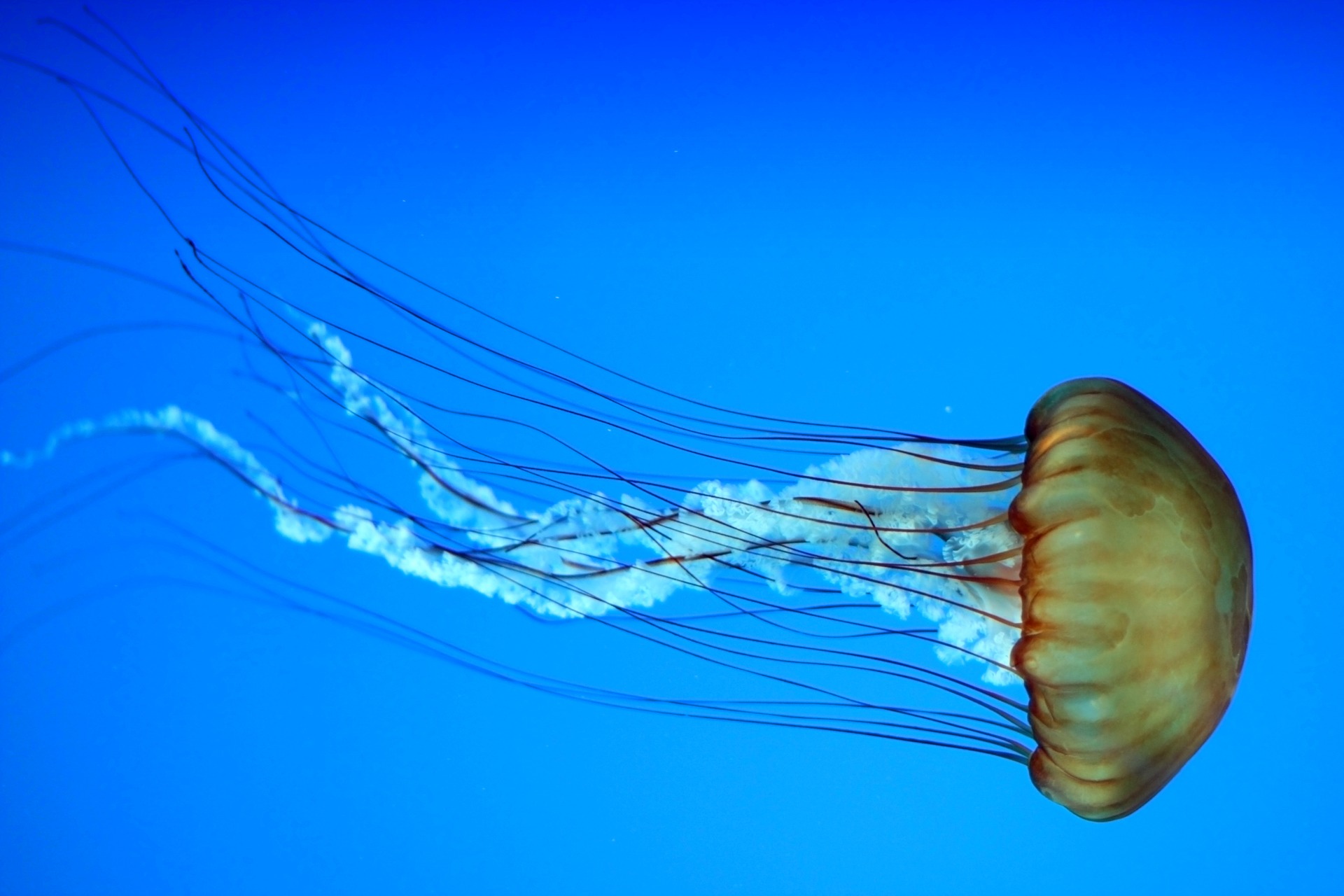The sting is in the tentacle & and it can kill

The feeling is instantly recognizable. There you are, happily swimming in the sea and then, ouch! There is a hot sting of pain shooting up your body. This will be the infamous sting of a jellyfish.
Jellyfish are gelatinous, soft and squishy, and they consist of about 95 percent water. The gel in their bodies is called mesoglea. The jellyfish larvae are like little discs that float about in the sea. As these grow to maturity, they grow tentacles under a hat-shaped top. Due to the fact that they are so soft, they need a method of defense and a way to catch prey. For both, they use their tentacles.

The tentacles have cells along their length that are called cnidocytes. Inside the cnidocytes (also known as a cnidoblast or nematocyte) are needle-shaped parts that deliver a dose of venom.
When a tentacle is touched by your arm, for example, the cnidocytes are released, injecting venom. This happens at lightning speed. The astonishing thing is that these tentacles can sting even after the jellyfish is dead.

Jellyfish, along with corals and anemones, are members of the animal group known as cnidarians. These all have a protein in their venom known as a porin. This is fast-acting and is very strong. The way the toxin works is by breaking holes in the cell walls of the victim, be it skin cells, blood cells or nerve cells, with the result of redness, blistering, and pain. Different species have different compositions of porin. The sting of some jellyfish is just annoying, while others can land you in the hospital.

The first thing to do when you have been stung is to rinse the area with vinegar or salt water (there should be some of this close by!) Do not use fresh water and do not use urine as some old wives’ tales suggest. The change in the dilution of salt on your skin could cause more of the unfired nematocysts, which are already in your skin, to release more venom.
If there is a very intense allergic reaction and you experience blurred vision, rapid heart rate, or have difficulty breathing, you will need to seek medical help at once, About Education reported.

Most jellyfish stings are mildly annoying and will just leave you with a sore or a blister. There are those that sting, however, such from the Indian box jellyfish, also known as a sea wasp, that release venom that, if large enough, has been known to kill a human by contraction and seizure of the heart muscles. You need not be afraid of jellyfish, but they do certainly deserve some respect.
If you have any comments, please drop us a message on our Outdoor Revival Facebook page.
If you have a good story to tell or blog, let us know about it on our FB page. We’re also happy for article or review submissions; we’d love to hear from you.
We live in a beautiful world, get out there and enjoy it. Outdoor Revival – Reconnecting us all with the outdoors.
